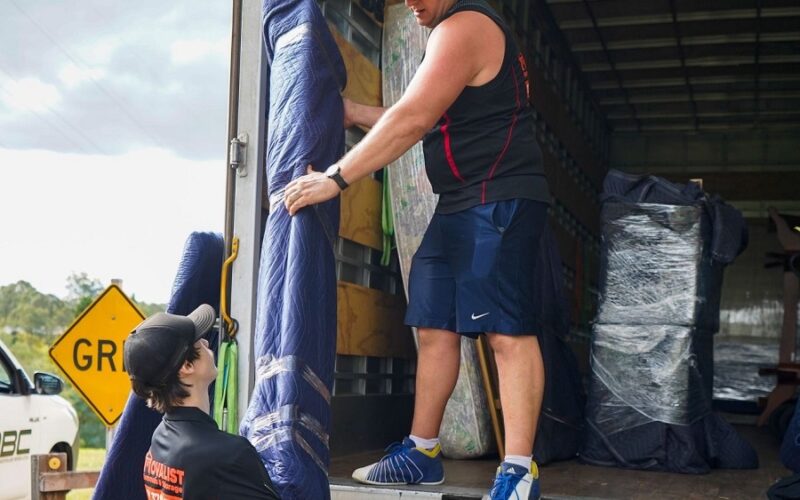
Change remains an unwavering constant in life. For countless Australians annually, this change takes the form of geographic relocation. Whether moving just a few steps away or spanning across the suburbs of Australia, from cosy apartments to vast residences, the process of relocating needs attention. However, armed with proper preparation and resources, it can become a manageable endeavour.
Here’s a moving house checklist by Brisbane moving services to help you manage your moving tasks effectively.
One and a Half to Two Months Before Moving
Around one and a half a month to two months before your move, it’s essential to plan for utility and service cancellations. Reach out to your utility providers and arrange for the discontinuation of services, while providing them with your new address for any final billing purposes. Simultaneously, take the opportunity to assess the services required for your new location and see if you can schedule them in advance.
Common service providers that necessitate contact include:
- Water and sewage treatment
- Internet and cable services
- Electricity
- Natural gas or propane
- Trash and recycling pickup
- Homeowners’ or renters’ insurance
- Gardeners, landscapers, and snowblowers
- Gym membership, if applicable
What should you do apart from that?
1. Prioritise giving notice to your landlord if you’re a renter.
The customary notice period typically falls within 60 to 90 days. However, do verify the specific requirements in your state’s laws and rental agreement, as they may differ. To ensure the return of your deposit, make arrangements for a walk-through inspection. For homeowners, providing notice to the homeowners or neighbourhood association, if relevant, might also be necessary.
2. Initiate the process of curating your belongings.
Most moving companies advise commencing this task eight weeks ahead of your move. Approach it strategically by dedicating one to two rooms per weekend. Sort your items into three distinct categories: keep, give away, and recycle/trash. If you possess a surplus of clothing to donate, refer to our helpful guide on responsible donation or repurposing options. Additionally, take a critical assessment of any cumbersome furniture pieces. As moving expenses are often influenced by weight and size, contemplate whether it’s worthwhile to reinvest in these items solely for transportation purposes. Before the move, consider selling items such as couches, grills, patio furniture, and other sizable belongings that are still functional but not deemed essential for the journey ahead.
3. Contemplate different aspects before hiring a particular brookfield moving company.
When hiring movers, start the search early, ideally two months before the move, to secure the best price. Focus on reputation and experience when selecting a moving company, and seek recommendations from friends, check reviews on Yelp, Google, and Better Business Bureau. Verify licence for interstate moves with the Australian Department/s. For a comprehensive estimate, consider a free on-site evaluation or a virtual walk-through. Obtain three estimates before making a decision. For rental buildings, inquire about a certificate of insurance (COI) from the moving company for added protection. Alternatively, you can opt for a PODS portable container, either loading it yourself or hiring a team. This provides flexibility and storage options if needed.
Six Weeks Before
At the six-week mark before your move:
- Place an order for necessary supplies, including moving boxes, tape, Bubble Wrap, and permanent markers. Remember to also order specialty containers like dish barrels or wardrobe boxes.
- Begin using up items that you don’t plan to move, such as frozen or perishable foods and cleaning supplies.
- Take measurements of your new home’s room dimensions, if feasible, to ensure your larger furniture pieces will fit through the doorways.
One Month Before
At the one month mark before you move:
- Finalise your choice of moving company and obtain written confirmation of the moving date, costs, and other particulars.
- Initiate packing by prioritising infrequently used items like the waffle iron and croquet set. Take note of valuable items that may require additional insurance coverage from the moving company. Declare any items valued over $100 per pound in writing, such as a computer.
- Label each box clearly and assign a number, indicating its contents and designated room. This aids in maintaining an inventory of your belongings. Prepare labelled “essentials” boxes containing items you’ll need immediately at your new home.
- Safeguard valuables like jewellery and important documents in a secure box that you’ll personally transport. Include the mover’s estimate in this box for reference on moving day.
- Complete a change-of-address form at your local post office or online. Inform a nearby trusted neighbour to keep an eye out for any stray mail after you’ve moved. Follow up with them two weeks and then again two weeks after the move.
- Notify essential parties of your upcoming move, including banks, brokerage firms, your employer’s human resources department, magazine and newspaper subscriptions, as well as credit card, insurance, and utility companies.
- Arrange for medical records to be transferred to new healthcare providers or obtain copies for your records.
Two Weeks Before
As the move approaches, two weeks before:
- Coordinate with your workplace to have the moving day off, ensuring you’ll be available to supervise the process.
- Take your car for a tune-up at a garage, requesting the mechanic’s input on any necessary services if you’ll be transitioning to a new climate.
- Empty your safe-deposit box if you plan to change banks, and transfer the contents to a secure box you’ll personally carry on moving day.
- Reach out to the moving company and double-check all arrangements to ensure a smooth move.
One Week Before
With one week left before the move:
- Ensure an ample supply of prescriptions by refilling those you’ll require in the coming weeks.
- Try to complete your overall packing a few days before the move. Subsequently, pack suitcases for each family member with enough clothes to last for a few days.
Two Days Before
Just a few days prior to the move:
- If you’re taking your refrigerator with you, ensure it’s emptied, cleaned, and defrosted at least 24 hours ahead of moving day.
- Verify the moving company’s scheduled arrival time and other particulars. Prepare precise, written directions to your new home for the staff, including your contact information like your cell phone number.
- Make necessary arrangements for payment. If you haven’t arranged to pay by credit card, obtain a money order, cashier’s check, or cash for payment and tipping. A tip of 10 to 15 percent of the total fee is suitable if the staff has performed well. Don’t overlook the gesture of offering refreshments, always warmly appreciated.
On the Moving Day
On the day of the move:
- Confirm that the arriving moving truck belongs to the hired company. Verify the number painted on the truck to match it to the number provided in the estimate. Beware of potential scams.
- Prior to the movers’ departure, sign the bill of lading/inventory list and retain a copy for your records.
Congratulations on the Move!
Congratulations, you’ve completed all the necessary steps before and during your move with this moving checklist. Did you find the information helpful? We appreciate your feedback, so feel free to share any thoughts or suggestions in the comments section below.
Wishing you a fantastic time in your new home and Happy moving!





